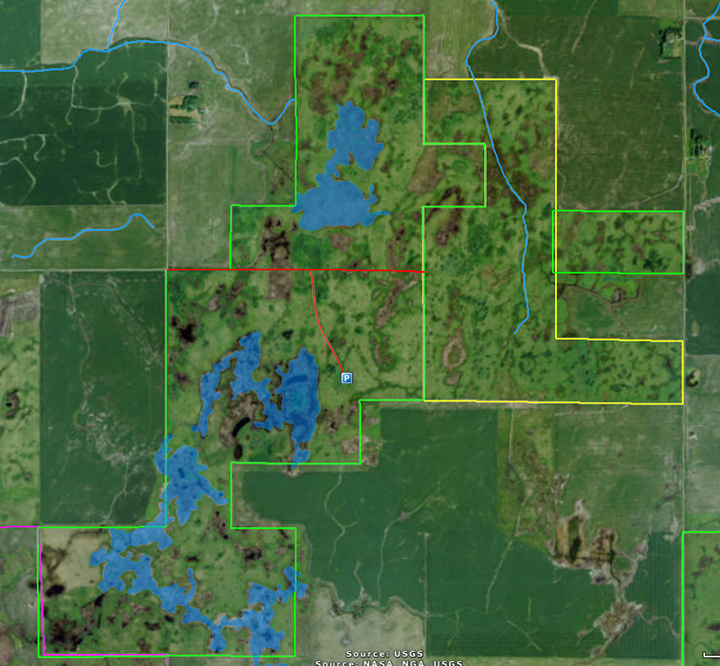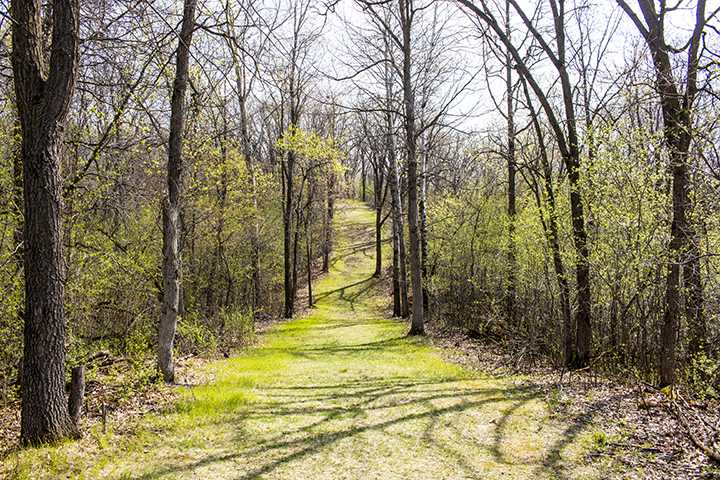Wambach Wildlife Management Area (WMA) is a 1,288-acre reserve in northwestern Minnesota. It consists of two units separated by Santee Prairie SNA. The large 1,209-acre West Unit is a mosaic of mesic prairie, shallow lakes, ponds, large areas of cattail marsh, and various wetlands. The 79-acre East Unit is mostly mesic prairie with some wet prairie and wetlands.
Deer, small game, forest game birds, pheasants, and waterfowl can be hunted here. Small white lady’s slipper (Cypripedium candidum), a species of special concern, is found here. A survey in 1994 found 12 Powesheik skipperling (Oarisma powesheik), a federally endangered butterfly, on this site. This small butterfly has not been seen in the last 10 years in Minnesota.




